The agreement set out that in order to ensure the survival of the missionaries on this island, the East India Company had to provide each priest with land and slaves to work on it, since on the island only slaves were to do manual work. The Paris directors thus created the conditions for the priests to devote themselves entirely to their spiritual task. They felt they could not be both good priests and good inhabitants. Through this simple provision, the first four Lazarist missionaries to arrive on Bourbon in 1714, as well as all the others who followed in later years, were forced to accept slaves working for them. In spite of themselves, they found themselves involved in the practices of the system. The Church’s priority was not to meddle directly in socio-economic affairs, since its aim was to be present throughout the world. The Lazarist priest could, at the most, reform the system at home, since on the local level, any action hostile to slavery would certainly incur the wrath of the East India Company. The Church was faced with little choice: either it kept to its principles and refused to work in places where slavery was rife, or it accepted to work where the system was applied and come to the aid of those who were suffering.
Given the context, what role did the Catholic church play on Bourbon island? How much room for manoeuvre did the Church have in its work to convert slaves, faced with the island’s governors and inhabitants? Among the clergy working on the island between 1714 and 1848, were there persons who stood out and what role did they play?
The Lazarist clergy were hardly permissive in their attitudes when baptising slaves in the colony. They wished to avoid behaving like the Portuguese priests who would be paid to baptise without giving the least religious instruction. They set out two rules for the slaves and they applied these scrupulously: there would be no baptism without teaching and no baptism without marriage. Exceptions were granted for slaves in danger. These were limited to traded children aged between five and ten, adults in old age and who had ‘reverted to the habits of youth’, adults permanently disabled, providing they showed a great deal of good will, and to adults about to marry who had been instructed and prepared for a certain period. However, this policy came up against two major stumbling blocks: language and the impossibility to marry, due to a shortage of women.
Catechism classes were difficult to organise since the public was illiterate and unfamiliar with the French language. As the slaves had been imported from India, Madagascar and Africa, the priests could not master all the different languages and communication necessitated the presence of interpreters.

Coll. Léon Dierx art gallery
The efforts made by a few missionaries such as Caulier, Davelu and Durocher, to learn the Madagascan or Creole languages, or even draw up a dictionary or catechisms to be used as tools for the intention of future priests on arrival, were praiseworthy but inadequate. As the masters feared revolt, they would limit the slaves’ comings and goings. To facilitate the work of the clergy, the masters were asked to prepare the slaves on the estates. They could not take on this task, since many, not being fervent Catholics, had broken off from the Church. They tended to stay away from priests, preferring not to hear criticisms of their vanity, laziness and sexual licentiousness. The governors were not model Catholics either. All these elements contributed to the fact that the masters did not encourage their slaves to prepare for baptism. The language issue became obvious during confession, since the slaves were hardly able to explain the duration and frequency of their habits, often not understanding the terms week, month or year. The terms that needed to be used were ‘from one Sunday to another’, ‘from one moon to another’ and ‘from one rice harvest to another’.

The clergy could not consider baptising adult slaves without their being married. Any other attitude would condemn the new convert to living in sin. For all the slaves to be able to marry, the governors would have needed to bring into the colony men and women slaves in equal numbers, but they never attempted to do so. The gender imbalance played against the Lazarist missionaries. Also, they could not admit one of their slaves leaving to follow her husband. Regarding this issue, the Apostolic Prefect informed the archbishop of Paris this was the cause of the loose morals in the colony. The project failed as a result of the gender imbalance and the missionaries became discouraged as early as the 1720s, asking to return to mainland France. In 1720, Mr Renou informed his superior:
Our work with the slaves has, up till now, not met with the success we had hoped for. And yet, their slavery and their misery, which had made them contemptible in the eyes of other men, and which leave no place for self-respect in what we do for them, are, I believe, what should commit a child of Mr Vincent to devote himself to them more efficiently.
In this colony, where the mortality rate amongst the slaves necessitated constant recruitment of workers, the refusal to baptise a slave unless the sacrament was followed by marriage complicated their conversion. The gender imbalance made reforming morals difficult, even though the slaves gave the impression of following the teachings received.
In the face of the slaves’ mistrust of them, the priests felt powerless. The Apostolic Prefect Teste noted: ‘They (the Africans) consider us to be the doctors of the Whites, they understand that we speak the truth and the word of God… and as the heads of the world’s dominant religion.” It was difficult for them to satisfy both types of worshippers: to be the clergy of the whites as well as missionaries for the slaves. Finally, they remained priests in their respective parish. The Lazarist missionaries found it difficult to work in the colony, since it was not easy to convert the slaves when the practice of the masters themselves was lukewarm and hardly set a good example. The church, as well as the island’s cemeteries, confirmed that slavery was rooted in the island’s society. To remain on good terms with the masters, they accepted to limit the number of religious festivals. They renounced demanding of the slaves church attendance for half festivals. In the churches, the benches were reserved for the free population, while the slaves had to stand. During the revolutionary period, Jean Lafosse, the parish priest of Saint-Louis, set up benches for the slaves at the back of the church. The various problems encountered by this particular parish priest proved that the priests’ possibilities as regards spreading Christ’s message of love and fraternity in the society were limited. In the cemetery, a wall separated the section reserved for the whites from that set aside for the slaves.

As the 1789 French Revolution led to a drop in the number of des vocations, the Lazarist congregation was no longer able to send new heads of clergy to Bourbon island. The missionaries were all ageing and sick and no longer efficient and the slaves were abandoned. As from 1817, they were replaced by missionaries from the Congregation of the Holy Spirit. Abbot Pastre declared:
The Africans, who live like animals and who die almost in the same way, could be open to some instruction and even a change in their morals, if only their masters were ready to help us. But the latter treat them so harshly and make so few efforts to encourage them to make alliances with the church that it is difficult to bring them to practise the religion.
Abbot Cottineau emphasised that ‘moral corruption was at its height’ among the slaves. In the following years, the situation deteriorated and religious practice was only occasional. In 1836, Poncelet, the Apostolic Prefect, was horrified before the permissiveness and the undefinable moral degeneration on the island. Among the slaves, only the new-born were baptised, while the adults remained strangers to the church, only being baptised when in danger of dying. In a letter written in 1827, abbot Minot used harsh words regarding the slaves:
On all levels, the slaves present the greatest obstacles to the practice of the religion. Their ill will, their vulgarity, their inevitable tendency to steal, their universal lasciviousness, as well as the difficulties encountered by the masters when it comes to making them attend church services, all make it virtually impossible to convert them.
The masters persisted in refusing to send them to church.

In 1839, the apostolic prefect Poncelet confirmed that “while religious instruction is by no means neglected for the whites, unfortunately, the same cannot be said of the Africans, who have been and who still are neglected in respect of religious ideas.” The slaves had not progressed since 1817. A slave was only baptised if certain conditions were fulfilled: an acceptable level of instruction, repentance of past sins and a desire to lead a new life. Any slave that was baptised had to renounce living in sin and be married. In 1837, abbot Bertrand mentioned that out of 7,000 to 8,000 slaves in one parish, only 5 or 6 were married.
Abbot Jean-Baptiste Champ, parish priest of Saint-Pierre: victim of his zeal with the slaves in 1841.
The zeal deployed by the young vicar Alexandre Monnet with the slaves of the parish of Saint-Denis as from June 1840 was certainly known to his fellow priests. One of his few followers did not defend the local ministry, as he did, but the specialised African mission, a method that was preferred by the missionaries of the Sacred Heart of Mary congregation, founded by the abbots Levavasseur and Tisserant. On 31st July 1841, the Private Council examined the case of the missionary Jean-Baptiste Champ, whose zeal was undeniable, but who was criticised for his recklessness and violent character, entirely incompatible with his functions as parish priest of Saint-Pierre. He wanted to specifically take care of the religious instruction of the slaves, but his methods were contested.
Abbot Champ was taken to the hospital in Saint-Denis while awaiting to embark on the three-mast ship the Comte de Chazelles, sailing back to France.
More than ever, the local administrators asked the clergy to be extremely circumspect in their choice of clergy, since indiscriminate preaching was pointless or even dangerous. They found it difficult to take into consideration the degraded living conditions of the slaves. A bad priest “frightens them without correcting them and this only leads to lies and hypocrisy.” By indiscriminately developing the many principles of Christianity that directly applied to the social condition of the colonies, “they provoke the mistrust of the landowners, who consider that moral emancipation should be a guarantee of future security.” The missionaries almost always lacked patience. They may have liked being persecuted, as this increased their enthusiasm, but the new recruits only showed inertia. “Foreign to the country where they have been sent to exercise the ministry, lacking an understanding of the morals they aim to reform, they often consider as proof of ill will the cautious efforts of the administration, who wish to retain or direct incontestable but inconsiderate zeal.”
Alexandre Monnet: a new type of missionary in a French colony
Alexandre Monnet, an exceptional priest, succeeded in acquiring a solid reputation after working on Bourbon island, a small French colony in the Indian Ocean, over a period of just five years. Arriving here in June 1840, he resigned in 1845, going on to continue his work as missionary in Madagascar. When he returned on 12th September 1847, the settlers, considering him as undesirable, were ready to make an attempt on his life. To calm their anger, the governor Graëb decided to send him away, which he did 16 days later. When sailing away from the coast of Bourbon during the night of 28th to 29th September 1847, he was fully aware that the sanction concerned his work, the criticisms coming from all the important persons of the colony: the settlers, the administration and most of the priests.
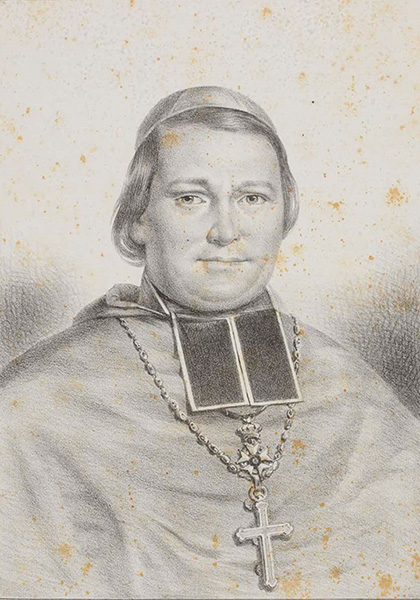
The history of French colonisation has attempted to define the implementation of three different actions in a specific field: military, economic and cultural action. Very often, government action was preceded by individual initiatives. Armed colonisation involves soldiers arriving from mainland France, to conquer and administrate. Following victory by the military, planters, traders, dealers and prospectors take over. They are the agents of a colonisation understood as bringing transformation to the country and also a lucrative investment. The economic development that benefits a few important families, a few owners, establishes the legitimacy of overseas political expansion and justifies its continuation. The most sensitive aspect is the issue of culture. Conquering of minds, conquering of hearts, a representation of the humanistic objective of the colonial project, or possibly a civilising mission, the abundance of definitions bears witness to a reality that is difficult to define and that reflects the desire to focus on the religious, as well as non religious, ideal. The coloniser’s ambition is clearly declared. The aim is to target the morals of other populations, wrapping them up in the civilisation of several centuries, in accordance with Western European perspectives, which leads the coloniser to reach out to mentalities, sensitivities and ethics: the deepest element of man, very often at the limits of the unconscious, of which religion is just one possible expression.
Monnet lived during an era when a new type of missionary appeared. 19th century intellectual and artistic groups were attracted to the Middle Ages. The idealisation of this bygone age was, it is true, a result of the romantic current, but the work Le Génie du Christianisme (the Genius of Christianity), written by Chateaubriand, also played an important role. However, a fear of the modern world resulting from revolutions and the progress of reason, fear that went hand in hand with a mistrust of the industrial revolution taking place, may have had the same effect: an idealisation of former periods and traditional values. Traditionalism refutes rationalism and the perceived dangers reflected in the questions raised by the 18th century philosophers. An entire rhetoric based on an admiration for the Middle Ages defined the 19th century missionary awakening.
Young Alexandre Monnet was a product of this period of missionary renewal. It is obvious that his bookish cultural background also had an influence on his methodological choices in the colonial environment.
Monnet drew his knowledge where he had drawn his vocation, in a work entitled Annales de la Propagation de la Foi, a revue started in late 1822 aimed at disseminating news of mission work.
By converting distant peoples, the missionary brings civilisation to the savages and thus compensates for the damage resulting from French and European scepticism.
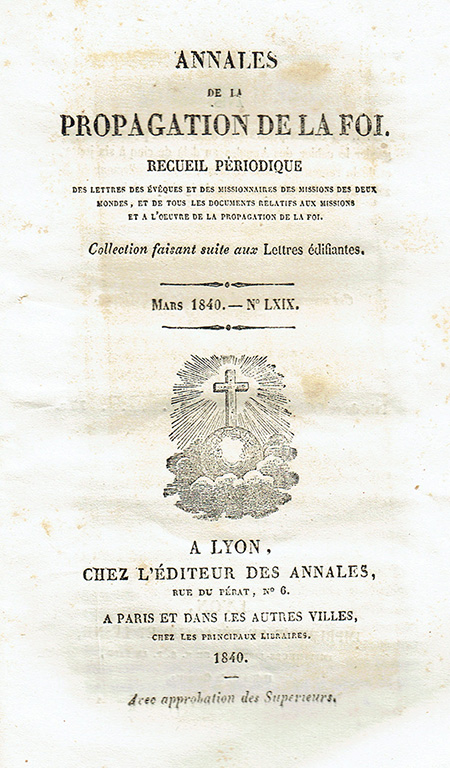
Trained in a spiritual circle where the missionary movement drew inspiration from the Mediaeval model of conquering and reconquering and after building up a portrait of the perfect missionary following a meticulous study of the Annales de la Propagation de la Foi, Alexandre Monnet had all the necessary assets to draw up a scenario he would play out in the evangelical circles of Bourbon island.
Many aspects of the missionary actions performed by this priest show that he cannot simply be accused of having been the right arm of the coloniser.
To begin with, a short time after arriving at the colony in June 1840, when, as curate to the parish priest of Saint-Denis, he was entrusted with the task of teaching catechism classes, after an initial contact with the few slaves attending the first session, he decided to give his teaching in their language and not his, in order to be understood. He noticed that the slaves had no education and no access to books, and so understood only a few words of the French language and that when they pronounced them they deformed them rather strangely. He decided to reach out to them. He did not consider it appropriate for them to learn French through the Creole language. He accepted the slaves as they were and decided to lead them to God as they were. He did not consider their language to be a burden that they must absolutely shake off if they were to reach God. As the legislator had tolerated only religious instruction for slaves, without declaring that this was to take place after they had learned to write or at least to read, Monnet decided that the only method possible was to teach catechism through questions and answers. As the slaves did not possess the tools enabling them to understand all the subtleties of the French language and as he wished to reach out to them, its was up to him to make the necessary effort, and not the slaves. To achieve his aim, he quickly lent an ear to the slaves in his parish, learned their language and translated the catechism into Creole, so they would understand it. He was absolutely convinced of the necessity of using the language of the learner and in 1845, as soon as he decided to follow the Jesuits in Madagascar, he immediately started learning Malagasy.
Once the problem of the language of communication was defined and resolved, there still existed another issue, not less serious, consisting in reaching out to the slaves. In this respect, he had to break down a great many barriers and came up against the sensitivities of the landowners, since he was not ready to grant all their wishes.
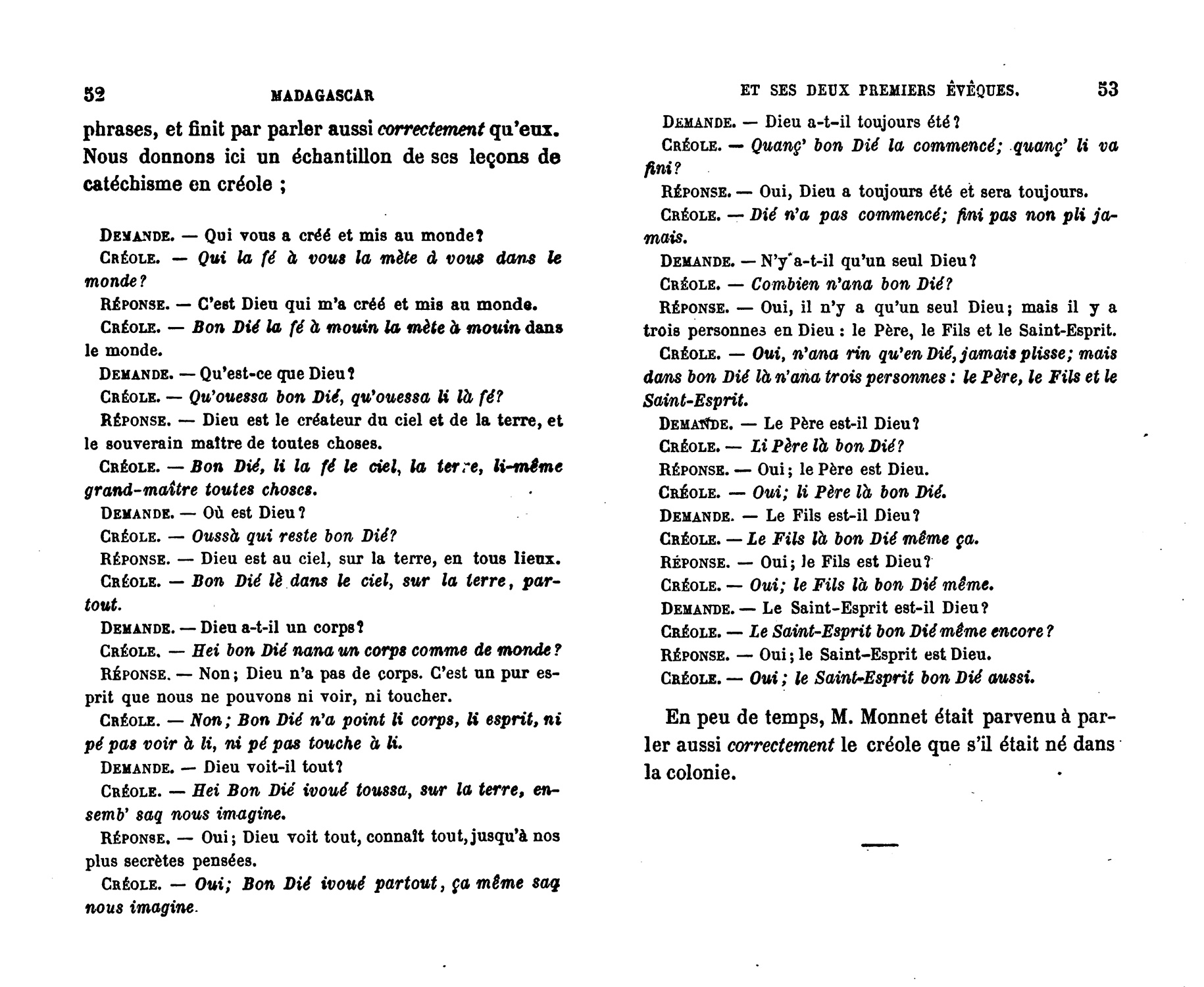
Secondly, when Monnet defined for himself his desired results, and organised his itinerant mission for the slaves, he refused to play into the hands of the representatives of the colony, undermining their principles, notably by facilitating marriage between slaves. From the first years of the slave system, the priests on Bourbon island had had to overcome all sorts of issues if they were to evangelise the slaves. The masters considered that by teaching slaves the catechism, priests gave them access to elementary knowledge that was useless but nevertheless dangerous, since the priest could not avoid communicating Christ’s egalitarian message and could not limit his teaching to a catechism of resignation and respect for the permanent character of the society, of established order. Consequently, the masters avoided collaborating with the religious process, which, in the long run, could result in destabilising the society. By drawing closer to the slaves, Monnet was able to criticise the image of the slave transmitted in France through letters written by priests themselves. Slaves were not thieves and liars, born lascivious and mutinous, but became so as a result of their situation, through the ferocity of the masters, following years of deprivation and all sorts of abuse. In a letter dated 19th January 1842, he wrote: “In the eyes of a large number (of priests), they (the slaves) are just beasts and brutes, whereas so much good could be made of them.” He did not consider that the slaves’ immorality as a consequence of paganism and questioned the system of slavery itself. “If they are poor subjects, it is the whites who are to blame, through their negligence and indifference.” By going against those who expressed alarmist opinions concerning the slaves, Monnet was a serious element of disruption. He gave an image of Christianity where the missionary is a guide, guardian and protector, all in the name of faith. Only salvation counted. He imagined a society cemented by faith and devoted to worship, escaping from the colonial society of slavery under the paternal direction of the priest. Monnet was aware of the limitations of his itinerant mission. Without the authorisation of the master, he could not set foot on an estate. In Saint-Denis, he only had the approval of a handful of landowners and could not reach out to all the slaves living in this vast parish. When he became parish priest of Saint Paul in 1843, he came up against settlers who considered that religion was private matter and they they were not to encourage their slaves to convert to Catholicism; they refused to give him access to their estates. He demanded that the State, which was for the evangelisation of the slaves, break down the walls put up by the masters. “My most sincere wish is that all the missionaries will say (to the government): either you give us access to all the slaves so that we can instruct them and turn them into Christians, or we leave.” In January 1842, he proposed that the Superior of the Congregation of the Holy Spirit should send priests wishing to deal exclusively with the slaves on the island. When the missionaries from a new congregation, specialised in evangelising Africans, arrived in the colony, he gave them free reign. He resigned from the clergy of Bourbon and became a totally uncontrollable priest.

By questioning the priests’ methods of working and going out to the plantations to evangelise the slaves, he antagonised all those who had been working in the colony for many years and who did not like the idea of a newcomer giving them lessons on how to approach slaves and teach catechism. When told of his coming, they could not appear less generous than the masters, and accepted his presence without, however, approving either his ideas or those of the masters. The itinerant character of his mission gave rise to conflicts concerning the competence of men wishing to protect their position of authority. In 1840, he visited la Rivière-des-Pluies and Boiscourt in the parish of Sainte-Marie; in 1842, he went to la Rivière-du-Mât on the property of Mme Lory in the parish of Saint-André, to the estate of the widow Desbassayns in Saint-Gilles-les-Hauts in the parish of Saint-Paul and to the estate of de Chateauvieux in Colimaçons in the parish of Saint-Leu. The parish priests were displeased and did not hesitate to criticise his methods, declaring that he was acting too quickly. Monnet’s relationship with the slaves differed from that of the others. He did not limit his task to making Christians out of them; he also lent an ear to their problems and gave them what they needed to cover their most urgent needs. He instilled in them the notion of solidarity, advising them to pool and manage their savings. By placing his trust in them, he enabled them to grow and gave them back their dignity and humanity. All those who considered the slave as an object or chattel could not forgive him his audaciousness.
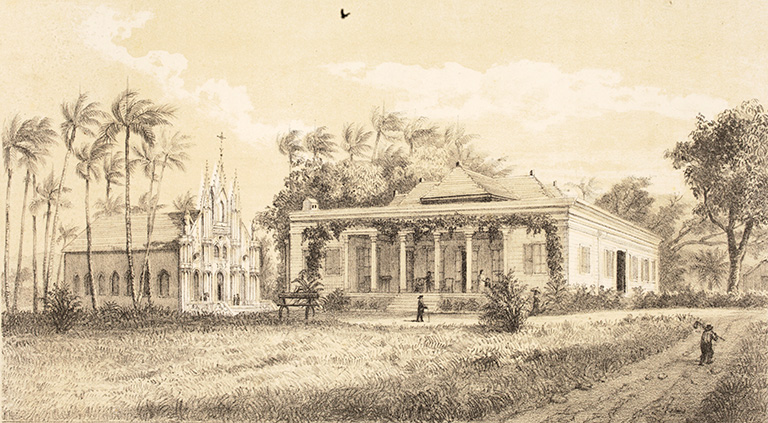
Thirdly, Monnet was not a man who agreed to follow the settlers in all their decisions and did not hesitate to criticise the system of slavery, which he considered to be a heresy. . The message of universal love transmitted by Monnet was ill-fitted to the system of man exploited by man and which denied the human element of the manual worker. Monnet openly declared that slavery was a true obstacle encountered by the priest in his task of evangelisation and in this respect, his candour could only attract hostility and prevent his extending his circle of acquaintances. He arrived in June 1840 and by the end of the year had declared that evangelisation must go hand in hand with emancipation. Thus, he openly denounced the system of slavery. He quite simply declared that the missionaries could not carry out their task until the slaves were free to express their faith as they wished. He even considered that carrying out any missions amounted to a waste of time. Above all, he advocated emancipation of the slaves. He did not consider evangelisation as a prelude to a proclamation of abolition of slavery, but by 1840 considered that the slaves were mature enough to be emancipated. His reply to all those declaring that the slaves needed to be moralised, he would quite rightly reply that they could never be religious as long as they had to bear the tyranny of the whites and be dependent on them, since the latter “cared little about the real degradation of their slaves, as long as they carried out their work in the fields or in the sugar-factory.” He questioned the dark scenarios of abolition envisaged by the settlers. To those who, taking the example of Saint Domingo, declared that the slaves would wreak havoc in the colony, he calmly replied: “If the slaves on Bourbon island are emancipated, there is no greater danger of rioting and revolution (to be feared) then there was in my village in 1830.” He was a true abolitionist, since he did not simply declare his opposition to slavery, but also considered the nature of a future society without slaves. He anticipated compensation for the masters, first of all to remove the argument of their being dispossessed that they advanced in order to justify their refusal of abolition. Secondly, by avoiding their being ruined, he wished, as far as possible, to protect the slaves, since they would be the first affected by the possible bankruptcy of the landowners in the post-abolitionist society. He did not wish their misery to be replaced by another.
His attitude to the abolition of slavery led to negative reactions from the other priests. When in March 1848, as the new superior of the Congregation of the Holy Spirit, he proposed that his colleagues should immediately liberate their slaves, without waiting for the official decree to be published, his words were simply met with laughter. On 20th January 1847, governor Graëb could not find sufficiently severe words when he proposed that the Minister of the Colonies should retain him in France. He declared:
Monsieur Monnet has created a reputation for himself on Bourbon as being a man of ardour, mediocre education and of zeal, but totally lacking in circumspection and caution. The wisest missionaries of the colonial clergy see him as a dangerous missionary, more likely to compromise than to advance the work of moralising the Africans. With a few exceptions, the Creoles hate him, seeing him as an enemy who has denounced them and blackened their image in a letter unfortunately destined to be published and where a few truths coexist with regrettable exaggerations that Mr Monnet, in fact, attempts to justify.
By taking an interest in the evangelisation of the slaves in Saint Denis and their daily problems, Monnet gave them back their dignity as human beings. They at last had the impression that someone from the society of whites took an interested in them. The priest succeeded in awakening in them their sense of solidarity and reconnected them with their ancestral traditions. Thus, when he decided to construct a chapel for them in la Rivière-des-Pluies, the slaves decided to come and work on the construction during their free time, free of charge.

Fourthly, when Monet, who preached the ideal of universal love, left Bourbon island to follow the Jesuits to Madagascar, it was above all because he was unsatisfied with the results of his work. At the end of 1844, after asking the Jesuits for support in organising a mission aimed at awakening the faith of his parishioners in Saint-Paul, he decided to give up all efforts at the start of the following year. Whatever was said in the flattering reports of his missions, he could no longer accept such superficial success. In the absence of support from his colleagues, he preferred to leave and find refuge under kinder skies, where there were even fewer resources than on Bourbon island. But Monnet had not come to Bourbon with the firm intention of playing into the hands of the settlers: when he realised that his mission had half failed, he resigned. The settlers who were hostile to the influence of the clergy in the social sector and who excluded the possibility of any interference by the religious authorities in the social organisation of the island could not give their approval to a priest who linked religious beliefs and morals.
Fifth, if Monnet was the right arm of the settlers, then his being expelled from the colony on 28th September 1847 was incomprehensible, not to say pointless. It takes on a meaning if we admit that his work did not satisfy the local settlers, who accused him of stirring up trouble in the island’s society. Why would the representatives of the settlers have depreciated the right arm of their society to such an extent?
Monnet remained humble when reaching out to the slaves, and they were aware of that. He gave them back their dignity, which they were not insensitive to. He saw them as his equals and considered them as capable of taking on responsibilities. Also, he was criticised and expelled for being at their side and on their side. Monnet thus deserved their consideration.
Monnet did not wish to start a revolution on Bourbon island. As a priest, he wanted to carry out his mission of priest with his heart. In his mission of evangelisation, he saw the man within each man. He considered that the linguistic and cultural differences were a source of wealth and did not make use of them to reject others, but all this was enough to make him a suspect, someone not wanted, as well as being an exceptional priest.
The case of the Creole priest Frédéric Levavasseur
As regards missionary work, Bourbon island set the pace under the July Monarchy. The impulse given by Pierre-Louis Frédéric Levavasseur, born in Sainte Marie on 25th February 18211 was extraordinary. Hardly had he achieved the age of reason when he was struck by the sordid nature of the living conditions of his father’s slaves and in particular the fate of the young children, who could not go to school. After following lessons with tutors who taught him reading, writing and mathematics, he went to the royal secondary school in Saint-Denis.
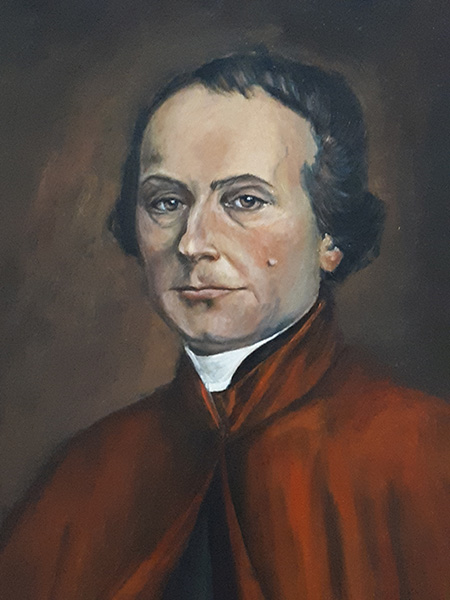
Thanks to the support of the Apostolic Vicar of Bourbon, on 16th February 1842, he sailed out of the port of Brest for his native island on the ship Sarcelle . During the crossing, he taught catechism to young sailors and a young man from Pondicherry. The Sarcelle spent one month moored in Rio de Janeiro, where the missionary noted the religious distress of the Africans, and a clergy lacking in zeal. All this, coupled with richly decorated churches, denoted a religion that was external rather than internal. On the afternoon of Friday 10th June, he disembarked on Bourbon . Initially, he stayed with his parents. Wishing to live as a missionary, he had a straw hut built on their property, dreading the day he would have to live separated from his mother, knowing she would be very upset .
Since words alone would not change the victims’ conditions, P. L. F. Levavasseur decided to take action, the only possible source of hope. He considered that putting an end to slavery was not a utopian dream. He gave careful thought to the issue of abandoning slavery in the mid term and drew up a plan of action aimed at facilitating the organisation of this new society that would be more fraternal and generous for the freed slaves. During his youth, his sense of generosity had led him to consider the slaves, scorned by those in power, as human beings possessing inalienable ontological dignity and deserving to be treated as equals and brothers. To open the way to freedom without violence, he used the Bible, from which he drew his main ideas and developed the topic of liberation, central to the Christian message. It was because the liberation of the society had to take place here on earth that he decided to act and become totally committed, in order to set up a Church that was attentive to the plight of all those suffering, all victims of domination.
By considering the poor slaves, totally deprived both materially and intellectually, as children of God and opening wide the doors of the Church to them, in order to generously distribute to them the word of God, of Christianity, he wished to create the conditions necessary for their integration into a society that would turn its back on the degradation of beings considered as inferior. The slaves should not simply be converted to belief in God, but to a new set of human values centred on love, justice and the capacity to face up to persecution and death on behalf of others. As he was no demagogue, he did not consider offering them a ‘low-level’ form of religion, for the sake of appearance or of having a large number of converts. He focused more specifically on teaching them and acted with the aim of seeing them taken charge of by the Church. In the absence of this initial work, aimed at creating connections between those in power and those dominated, the resentment accumulated by the latter could lead the colony to its downfall, a bloodbath on the day emancipation was declared.
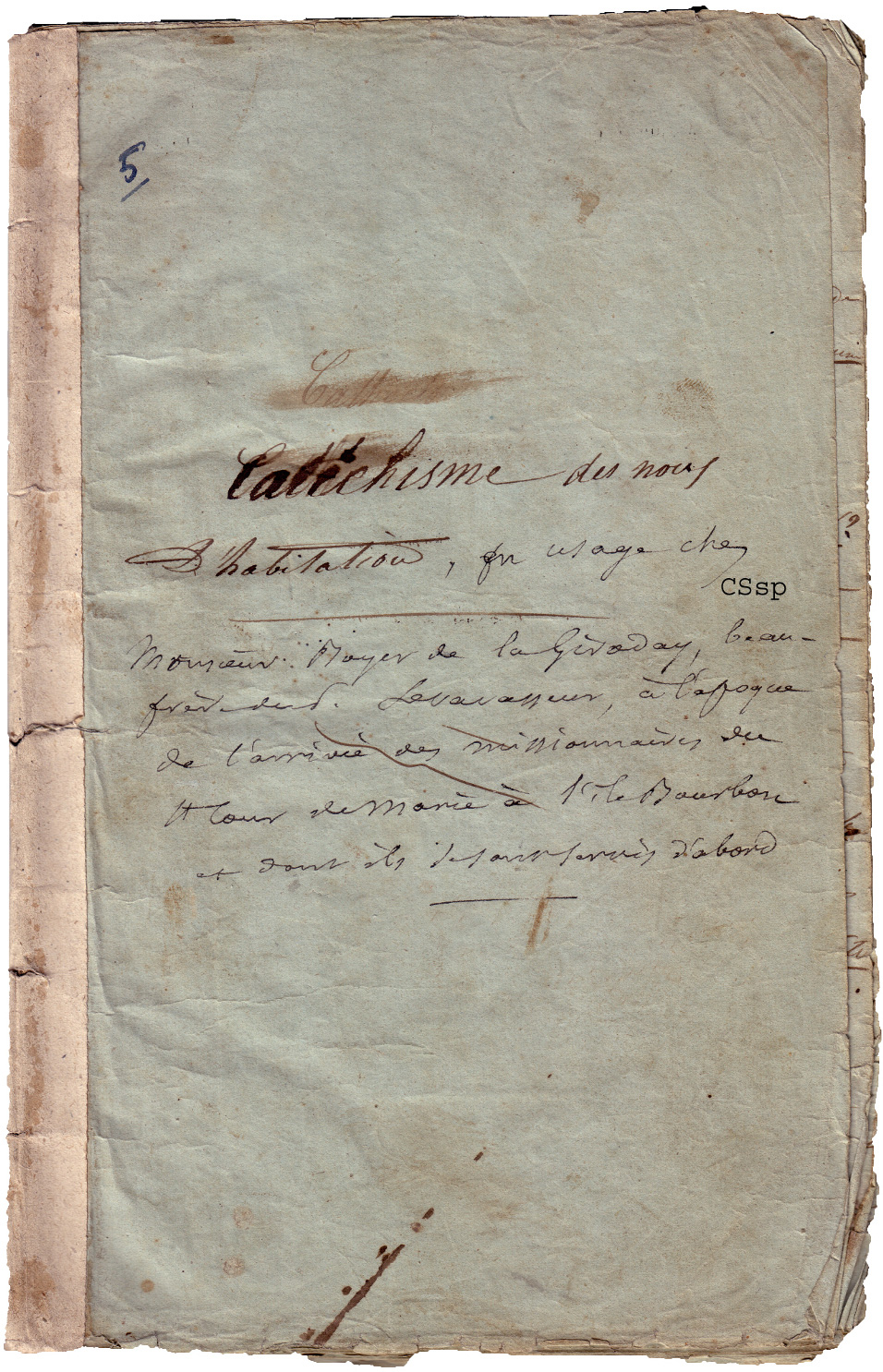
While opening the way to evangelisation, P. L. F. Levavasseur wished to assume human values. He was not a person to set up projects or give orders, but took on commitments and accomplished what he considered legitimate. In all sincerity, he chose his path through a love for the smallest, for the slaves that had been imported – depersonalised, desocialised, dehumanised ‘deancestralised’ – or those born on the island, abandoned and humiliated, since Jesus had asserted the primacy of God through the total gift of his own life for his father’s children. As his belonging to the Roman Catholic and apostolic Church involved opening out, he did not demand liberation solely for the slaves on his island, but considered the fate of all the world’s slaves. All those who suffered deserved the same attention, the same compassion, the same redemption. The task of liberation he had set himself, synonymous with the notion of love, widened out to encompass the world: the other Indian Ocean islands, Mauritius, Madagascar, Africa, the Americas, the Caribbean … anywhere Africans were exploited and under the yoke of domination and, very often, cruelty: anywhere they suffered through the wickedness of those in power. This liberation broke down the frontiers of space and time and preached the necessity of solidarity between the whole of humanity. P. L. F. Levavasseur did not follow a selfish imperialist form of logic and did not limit his action to inside the frontiers of the French colonial empire, but envisaged a trans-imperial project, applicable to all other empires. In fact, the first colony to welcome a member of the congregation of the Sacred Heart of Mary, thanks to the protection of the apostolic vicar Monseigneur William Collier, was Mauritius island, a colony under British domination. This was Father Jacques-Désiré Laval, the parish priest of Pinterville . P. L. F. Levavasseur himself had applied to carry out this first mission.
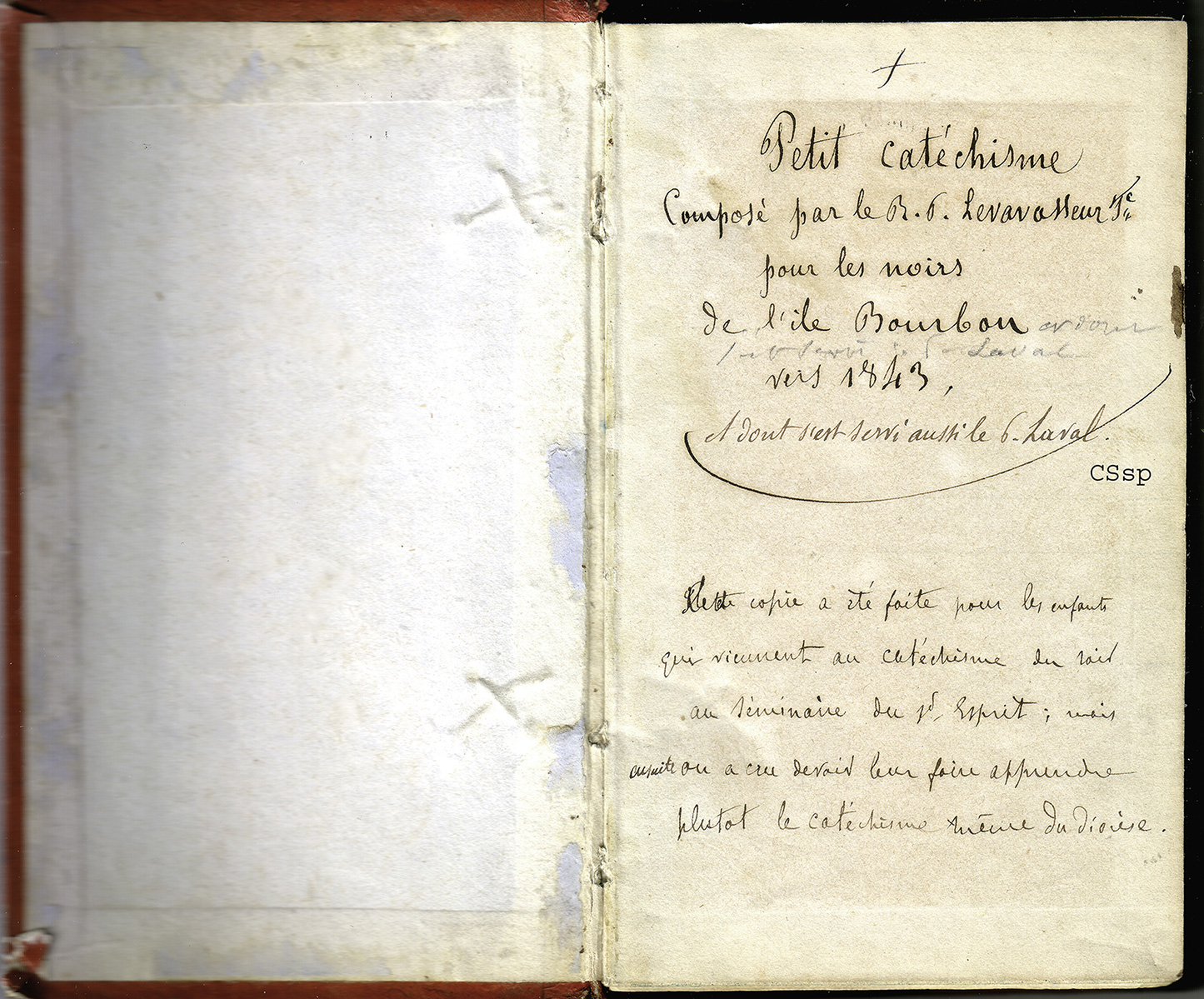
His awareness of the unfair and disrespectful character of the colonial society of Bourbon island and its deep divisions led to his decision to act, in all sincerity, in favour of those at the bottom of the social pyramid and considered to be the dregs. The primary aim of this Creole priest was to refuse to act as the right arm of the colonisers, who maintained the weakest in their isolation, ignorance and subjection, but on the contrary to lead to their ascension, to turn them into men standing upright and in the long term arrive at a large-scale adhesion of the population to the Catholic faith, leading to true Christianity focused on unity and fraternity and developed everywhere. He wished to replace the heterogeneous society by a homogeneous one. His decision was the fruit of an individual introspection and not of a connivance with the political powers in place. Due to the poverty of the vast majority of the free population of his native island and the scattered character of the inhabitants, that hindered the actions of the priests within the ecclesiastic structure, he decided it was essential to construct a whole series of small chapels. His idea of decentralisation prepared the way for the future: a multiplication of parishes in order to better serve the populations, encouraging close contact with the clergy.
It is no exaggeration to say that he distinguished himself above all as an architect of the liberation of slaves on his native island, a long time before the French government took the decision to abolish the system. His innovative ideas regarding the spiritual guidance of these actors of history, virtually abandoned to their fate, gave him uncontested charisma. His aim was to bring them the message of freedom on the eve of their liberation, of their transmutation from object to subject. He wished to help them out of their state of alienation, of dependency, of being ‘expropriated’, of their inability to make choices and take initiatives, in the most radical sense of the word. For him, the question was not simply one of spreading the word of faith and hope, but promoting a historical transformation of life. He considered the true and eternal dignity of man and of real and fair conditions of existence, which was how men could regain their freedom and hope, leading them to open out and seize ever new possibilities.
Both the political and the religious figures of the île de France (Mauritius) agreed on one point: the necessity to effectively crush Bourbon island. In a context that was fundamentally unfavourable to it, the Catholic Church on Bourbon island, despite all odds, managed to avoid following the political powers in all their erroneous ways, and apply an original policy aimed at preparing the abolition of slavery. The aim of the Church was not to serve the cause of the coloniser, but to act so that, in this society based on a total lack of respect, the smallest might see that they had their place in the Church and their human dignity would at last be recognised and respected. As regards missionary work within the universal Church, the most important decisions emanated from Bourbon island.